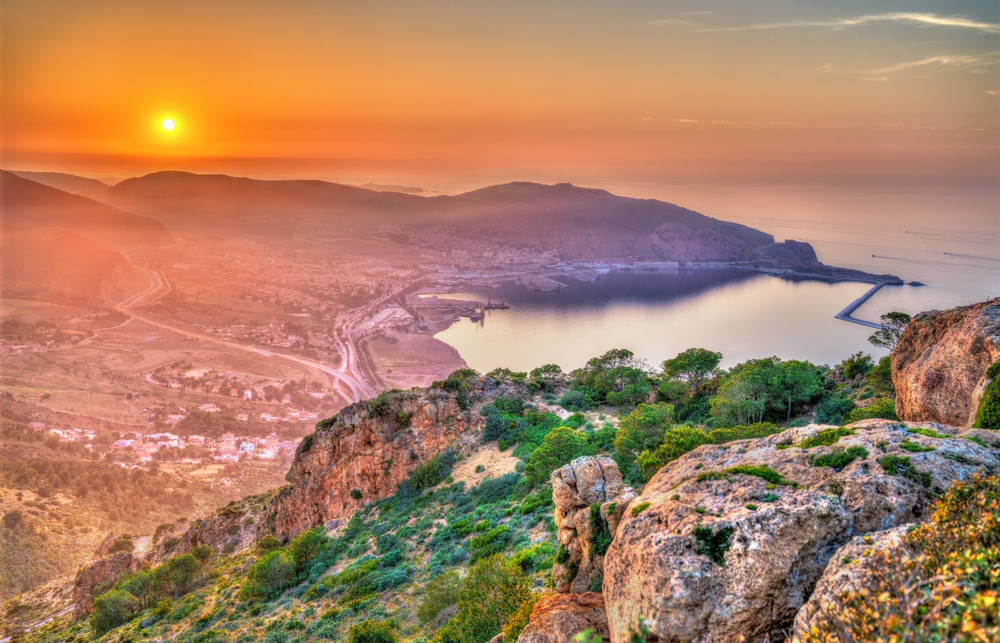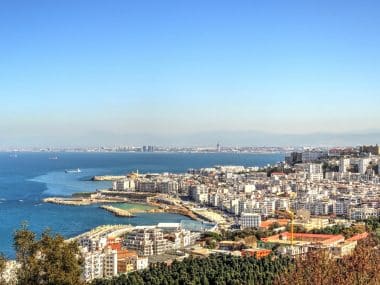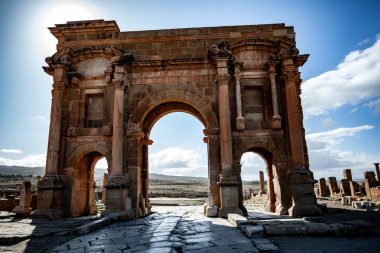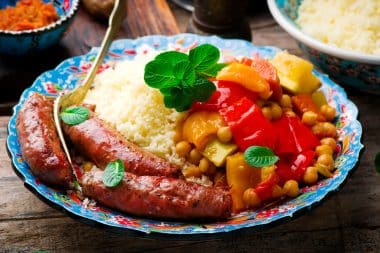
Despite its size and proximity to mainland Europe, Algeria is often overlooked. It is not yet a popular tourist destination, but that is precisely why this mysterious country in North Africa is a real insider tip for all backpackers who want to have a unique and down-to-earth experience.
The most important facts about Algeria at a glance
- In terms of area, Algeria is the largest country on the African continent. There are 38.7 million people on 2.38 square kilometers.
- Algeria is located in the north of Africa and borders Morocco to the west, Tunisia and Libya to the east, and Mali, Mauritania and Western Sahara to the south.
- The capital is Algiers. Arabic is spoken as well as a variety of Berber dialects.
Visa
The visa and the entry requirements are two of the main reasons why Algeria is still so unknown. At least 2 weeks before entry, a visa must be applied for at the Algerian embassy in the respective country.
The conditions for a positive exhibition for tourists are:
- A passport that is valid for at least 6 months after entry
- A firm confirmation of whereabouts
- A valid international health insurance
- Booked round-trip flights
- Cash or cheque payment of 60€ for a 90-day visa
Getting to Algeria
The border crossings have been closed since 1990 due to ongoing conflicts between Algeria and Morocco . Therefore, it is only possible to travel by plane, ship or by train and car via Tunisia .
Airplane
All international airlines fly to the largest airport in Algiers. The flight time from Germany is between 2 and 3 hours. For onward transport, you have to change to national airlines that fly to Annaba, Oran and Constantine.
Domestic flights are usually inexpensive and highly recommended for short trips.
Train
There is a railway network between the major cities of Algeria and Tunisia. Timetables can vary greatly depending on the time of year and local situation. An on-site inspection and consultation with the responsible employees is highly advisable.
Car
Due to the still poorly developed infrastructure, it is almost only possible to enter Algeria in the north of Tunisia.
If you have a longer trip to Africa ahead of you and are not afraid of adventure, you can also cross further south to a neighboring country. However, the entry restrictions there should be checked in advance. It is also important to familiarize yourself with the respective conditions, because extreme temperature fluctuations, poorly developed roads and sandstorms can cause problems for both the car and the driver.
Top sights
1. Algiers

For most people, the capital of the country is the starting point of their trip to Algeria. In the historic core of the city you get to know the culture and the climate. Whether you wander through narrow streets, stroll through the market or visit a museum; There is something for everyone here. In addition, Algiers is well connected and offers many opportunities for onward travel.
2. Ghardaia

Due to its historically important importance for Algeria and the country’s minorities, Ghardaia has been included in the UNESCO World Heritage Site. The old town is completely surrounded by a city wall, which provides pleasant shade during the afternoon. The centre has been well preserved over the years and offers travellers a glimpse of 10th-century Algeria.
3. Taghit
This small oasis borders the unique and mysterious Sahara Desert. Here you will not only find small alternative cafes and bars to spend the evening, but also the highest dune in Algeria. An excursion and a short walk to the top of the dune gives visitors a view of a unique sunset.
4. The Batna Region
In the east of the country is this unique mix of historical ruins and desert landscapes. The Timgad ruins had an important significance during the time of the Roman Empire and nowadays you can wander through the remains and learn the history.
From there, it’s only a short walk to Ghoufi Canyon. This steeply sloping structure of red stone and desert sand invites you to linger, take photos and have a picnic in the shade of the surrounding palm trees.
5. Other sights
- The bridges in Constantine
- A stop at the Djemila ruins south of Algiers
- Notre Dame d ́Afrique
- A hike along Cap Carbon
Cuisine
Culinary delights are also not neglected as a city traveler or backpacker in Algeria. The prices are very moderate compared to Europe and due to the influence of the Mediterranean, African cuisine and the exotic climate, there is a variety of delicacies to discover.
On a leisurely tour of one of the many traditional markets in Algeria, you will find the most original and best dishes in the country.
In addition to exotic fruits, the main foods are lamb and mutton, as well as a large selection of vegetables. The most popular dishes include:
Chakhchoukha
This is a warm stew made with lamb, tomatoes, onions, chickpeas and other vegetables. It is eaten with a thin, homemade flatbread. This is torn into pieces and used as cutlery.
Merguez

Mutton or beef is used to make a spicy bratwurst with garlic, chili, and cumin. This can be enjoyed either as fast food with fries or as a meat ingredient in stews.
Shakshuka
The most popular breakfast in Algeria consists of poached eggs cooked in a broth of tomatoes, onions and lots of spiciness. It is served with a still warm white bread.
Interesting facts about Algeria
- Geography: Algeria is the largest country in Africa and the tenth largest country in the world. It stretches from the Mediterranean Sea in the north to the Sahara Desert in the south. The landscape varies from coastal plains to mountains and desert regions.
- History: Algeria has a long and complex history, marked by ancient civilizations, Berber tribes, Roman rule, Islamic culture, and colonization by France. Independence from France in 1962 marked a crucial turning point in the country’s history.
- Culture: Algeria is known for its rich cultural diversity, which is shaped by the native Berbers, the Arab population and the traces of the French colonial era. Traditional music, dances, handicrafts and a diverse cuisine reflect this cultural diversity.
- Language: The official language of Algeria is Arabic, but Berber languages such as Kabyle and Tamasheq are also spoken. French is often used as a second language, especially in educational institutions and public life.
- Economy: Algeria has considerable oil and gas reserves and is one of the largest energy producers in the world. However, the country’s economy is highly dependent on the fluctuations of global energy markets, and the government has been making efforts to diversify the economy.
- Tourism: Algeria has impressive natural beauty, including the Sahara Desert, the Atlas Mountains, and Mediterranean coastal cities. Nevertheless, the tourism sector is still relatively underdeveloped and has great potential for growth.
- Challenges: Algeria faces various challenges, including economic inequality, high youth unemployment, social tensions, and occasional political unrest. The government is seeking reforms to meet these challenges and develop the country.

